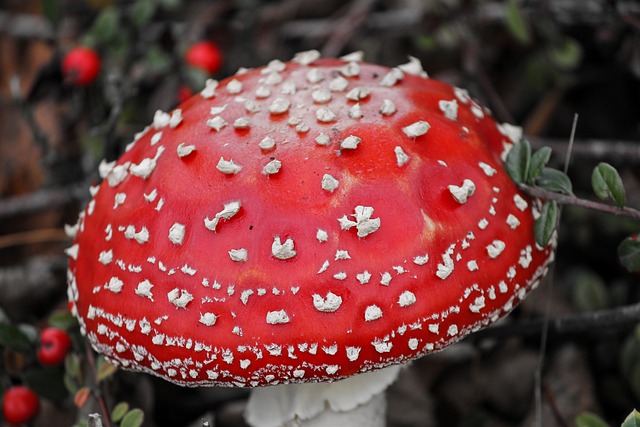The use of Amanita Muscaria, commonly known as the 'Fly Agaric' and recognized for its historical significance and edible properties, is being explored for its potential cognitive-enhancing effects through microdosing. This psychoactive mushroom contains compounds like psilocybin, which are believed to influence serotonin receptors in the brain, leading to reports of increased creativity, elevated mood, and heightened focus. Microdosing Amanita Muscaria is being considered by some as a way to integrate these benefits into daily life, with proponents highlighting its ability to enhance neural connectivity for better problem-solving and creative performance. However, it's crucial to approach microdosing responsibly, with proper sourcing, precise dosing, and adherence to local laws, ensuring safety, legality, and ethical considerations. Individuals considering Amanita Muscaria microdosing should consult healthcare professionals for personalized advice and guidance due to the variability in individual reactions to such substances. The focus on rigorous clinical trials and user experiences aims to unlock the full potential of this ancient psychedelic within contemporary psychopharmacology.
Embarking on the intricate journey of microdosing can be a transformative experience, particularly with the Amanita Muscaria, a psychedelic substance steeped in historical significance and modern curiosity. This article delves into the nuanced practice of microdosing, highlighting its potential for enhancing creativity and focus. We will explore the safety and sourcing of Amanita Muscaria, its biochemical makeup, user experiences, and the legal and ethical implications surrounding its use. As we navigate through each section, from understanding the basics to integrating practices into daily life, readers will gain a comprehensive view of how microdosing with Amanita Muscaria can be a friendly and beneficial endeavor when approached with due diligence and informed insight.
Understanding Microdosing: An Overview of the Practice
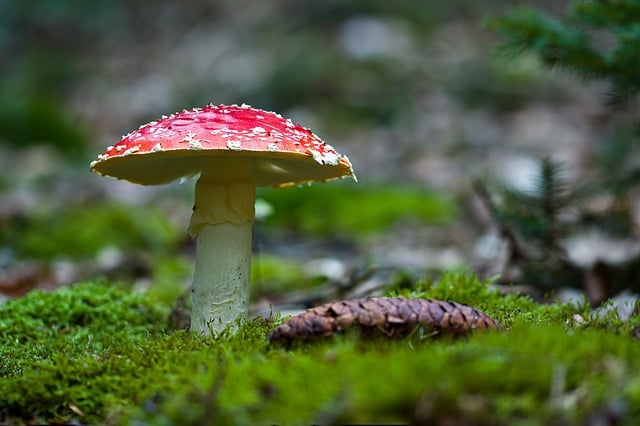
Microdosing, a practice that involves consuming small subtherapeutic doses of psychoactive substances, has garnered attention for its potential cognitive and productivity enhancements. This approach differs from traditional psychonautical experiences, focusing instead on minimal exposure to maximize benefits while minimizing the effects typically associated with larger doses. A notable compound often mentioned in discussions about microdosing is psilocybin, found naturally in mushrooms such as the Amanita Muscaria Edible, a species renowned for its psychoactive properties. Users claim that microdosing psilocybin can lead to increased creativity, focus, and well-being.
Research into the effects of microdosing is ongoing, with studies exploring both the psychological and physiological impacts of this practice. Proponents suggest that microdosing can offer a range of benefits, from improved mood to heightened sensory perception and problem-solving abilities. The Amanita Muscaria Edible, in its microdosed form, is one of the more studied psychedelic substances due to its well-documented history and consistent active compound content. As scientific understanding of these substances grows, so does the interest in their potential therapeutic applications, including for conditions like depression and anxiety. This growing body of research aims to provide a robust foundation for the safe and effective integration of microdosing into mainstream health and wellness practices.
The Amanita Muscaria: Historical Usage and Modern-Day Interest
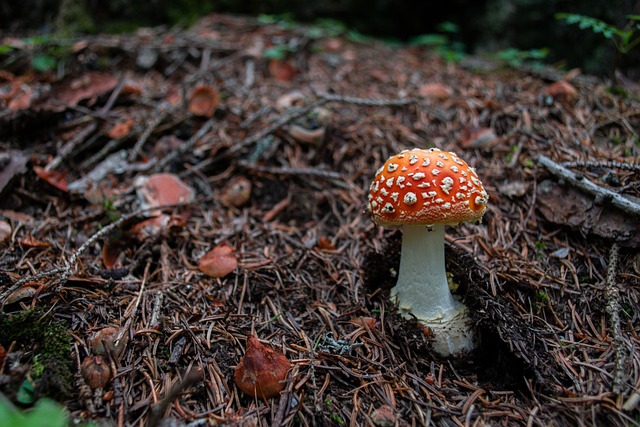
The Amanita Muscaria, commonly known as the fly agaric, has a rich and storied history that spans across various cultures and centuries. This iconic mushroom, recognized by its distinctive red cap with white spots, has been used in rituals, folk medicine, and shamanistic practices for millennia. In Siberian and Finnish cultures, it holds a place of significance, often depicted in ancient rock paintings and celebrated in folklore as a source of spiritual insight and healing properties. The Amanita Muscaria’s edible status has long been a subject of both intrigue and caution, with its consumption typically approached with reverence and respect for its potent psychoactive effects.
In modern times, the Amanita Muscaria has garnered renewed interest, particularly within the context of microdosing. Microdose enthusiasts explore this mushroom’s potential to enhance cognitive function, elevate mood, and increase creativity in small, non-hallucinogenic doses. The scientific community is examining these claims with a growing body of research exploring the pharmacological effects of Amanita Muscaria. Its unique blend of psychoactive compounds, including ibotenic acid and muscimol, offers a different profile compared to other more commonly known psychedelics like psilocybin mushrooms. This has led to a resurgence of interest in the Amanita Muscaria as an edible, natural substance with potential therapeutic applications. As such, it is becoming a topic of interest not only for those seeking a transformative experience but also for researchers and healthcare professionals interested in its medicinal possibilities.
Safety Considerations for Incorporating Amanita Muscaria into a Microdosing Regimen
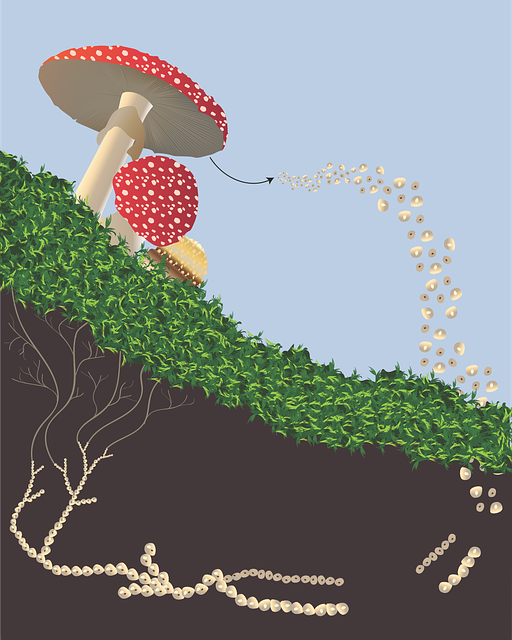
When considering the inclusion of Amanita Muscaria, commonly known as the Fly Agaric, in a microdosing regimen, safety must be paramount. Amanita Muscaria is a psychotropic mushroom with historical and cultural significance, but its use for microdosing carries inherent risks that should not be underestimated. The active compounds in this edible mushroom, ibotenic acid and muscimol, can lead to both psychological and physical effects that vary greatly among individuals. It is crucial to approach the use of Amanita Muscaria with caution due to its potent nature and the narrow window between a therapeutic dose and one that may induce adverse effects.
Prior to integrating Amanita Muscaria into a microdosing practice, thorough research and consultation with healthcare professionals are advised. The dosage and frequency must be carefully determined based on individual tolerance and biological factors. Users should be aware of potential side effects such as nausea, dizziness, and altered perception, which can be more pronounced with this mushroom compared to other psychedelics commonly used in microdosing regimens. Additionally, the legal status of Amanita Muscaria varies by jurisdiction, and users must adhere to local laws and regulations. Safety protocols should include having a support system in place, as well as ensuring a safe environment where the effects can be managed responsibly. It is also essential to source the mushrooms from reliable and reputable suppliers to minimize the risk of contamination or misidentification with potentially toxic look-alikes. With careful consideration, proper sourcing, and responsible use, Amanita Muscaria edible may be safely incorporated into a microdosing regimen when guided by expert advice and personalized protocols.
Identifying and Sourcing Amanita Muscaria: Key Points and Precautions
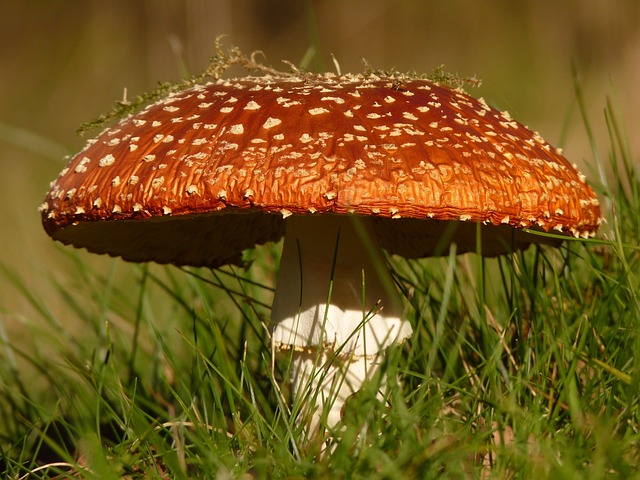
When considering the consumption of Amanita Muscaria for microdosing, it is crucial to approach the identification and sourcing of this mushroom with caution and informed guidance. The Amanita Muscaria edible, commonly known as the fly agaric, is a psychoactive fungus that has been used historically in various cultural contexts for its hallucinogenic properties. Its distinct red-and-white cap and concentric rings make it relatively easy to identify, but due to the presence of toxic lookalikes, misidentification can be hazardous. Prospective microdosers must learn to distinguish Amanita Muscaria from poisonous species like the Amanita phalloides, which can cause serious harm or even be fatal if ingested.
To safely sourcing Amanita Muscaria edible for microdosing, it is advisable to procure them from reputable suppliers or certified growers who specialize in psychoactive mushrooms. These experts ensure that the mushrooms are not only correctly identified but also grown under controlled conditions, free from contaminants and harmful substances. Additionally, microdosers should adhere to local laws and regulations regarding the possession and use of psychoactive substances, as these can vary significantly by region. Safety should always be a priority; thus, consumption should only occur under well-informed circumstances with proper dosing and in settings where medical assistance is readily available in case of unforeseen reactions.
The Biochemical Composition of Amanita Muscaria and Its Implications for Microdosing
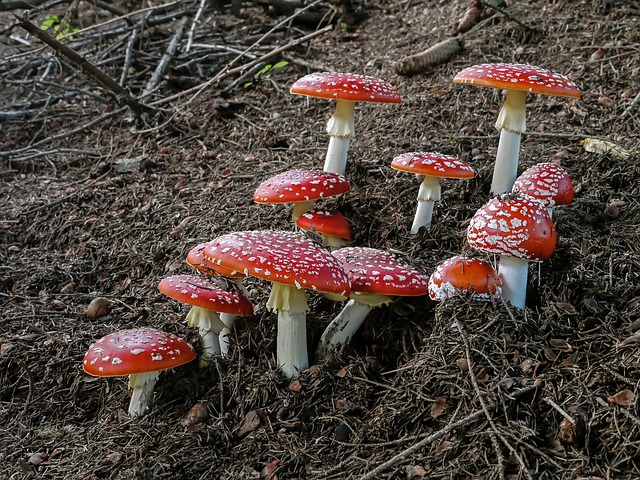
The Amanita Muscaria, commonly known as the fly agaric, is a mushroom of significant biochemical complexity. Its psychoactive properties are attributed to the presence of several compounds, including psilocybin and psilocin, which are serotonin receptor agonists affecting the 5-HT2A receptors in the brain. These substances are responsible for the hallucinogenic effects associated with Amanita Muscaria consumption. When microdosed, these compounds can lead to a range of cognitive enhancements and mood improvements without inducing the full psychoactive experience. Research has shown that microdosing Amanita Muscaria can potentially benefit individuals by promoting creativity, enhancing focus, and improving mood. The implications for microdosing are particularly intriguing given the unique biochemical makeup of Amanita Muscaria, which also contains other bioactive compounds like muscimol and ibotenic acid that may contribute to its effects. Understanding the precise mechanisms by which these compounds interact within the human body is crucial for optimizing their therapeutic potential while ensuring safety. As such, the study of Amanita Muscaria’s biochemical composition is essential for advancing the field of psychedelic microdosing and for developing treatments that could benefit from its unique properties.
Psychological Effects of Microdosing Amanita Muscaria: User Experiences and Studies
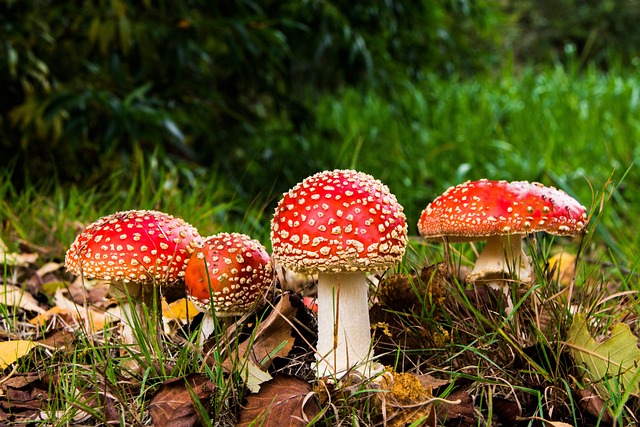
Microdosing, the practice of ingesting small subtherapeutic doses of psychoactive substances, has garnered attention for its potential psychological effects. Among the psychedelics explored in microdosing regimens, Amanita Muscaria, commonly known as the fly agar, is gaining prominence due to its edible nature and historical use. User experiences with Amanita Muscaria in microdosing contexts often report a range of positive psychological effects, including enhanced creativity, improved mood, and heightened focus. These anecdotal reports are increasingly supported by emerging studies that suggest the active compounds in Amanita Muscaria, namely ibotenic acid and muscimol, may contribute to these benefits. Research indicates that these substances can modulate serotonin receptors, potentially influencing mood and cognition. Clinical trials are essential to further elucidate the efficacy and safety of Amanita Muscaria microdosing, as well as to understand its underlying neurobiological mechanisms. As the scientific community continues to investigate this area, the collective body of user experiences and empirical research points to promising avenues for the therapeutic application of this ancient psychedelic in modern psychopharmacology.
Legality and Ethical Considerations of Using Amanita Muscaria in Microdosing Practices
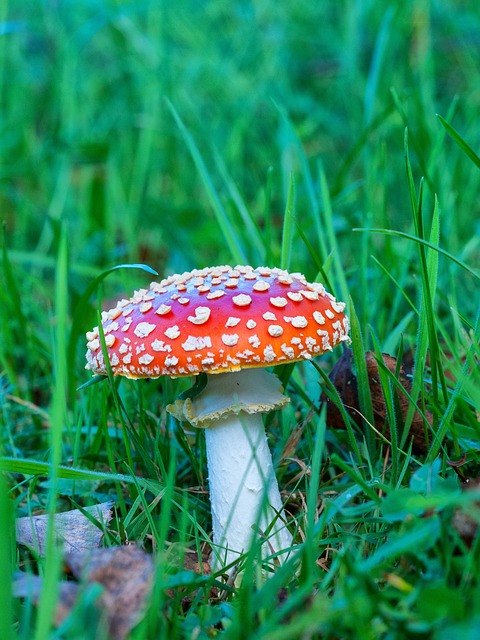
The use of Amanita Muscaria, commonly known as the ‘Fly Agaric,’ in microdosing practices has sparked both scientific and ethical debates due to its historical association with psychoactive traditions and its unique legal status across different jurisdictions. Amanita Muscaria, while recognized for its edible properties in small quantities, contains psilocybin, a naturally occurring psychedelic substance. In the realm of microdosing, where individuals consume sub-perceptual doses of a psychoactive substance to potentially enhance cognitive function and creativity, Amanita Muscaria is gaining attention for its potential benefits. However, the legality of using this mushroom varies greatly; while some countries have no specific laws addressing it, others have strict regulations that categorize it as a controlled substance akin to more well-known psychedelics like LSD or psilocybin-containing mushrooms. Users must navigate these legal disparities carefully to avoid legal repercussions.
From an ethical perspective, the use of Amanita Muscaria in microdosing involves considerations of safety, consent, and the potential for misuse. Ethical discussions often center around the responsible sourcing of the mushrooms, ensuring they are harvested sustainably to preserve biodiversity. Additionally, there is a growing emphasis on the importance of user education, harm reduction strategies, and access to evidence-based information regarding dosage and effects. The ethical implications extend to the scientific community as well, where rigorous research is needed to validate the therapeutic potential and to establish clear guidelines for safe and effective microdosing practices involving Amanita Muscaria. As such, the integration of this mushroom into microdosing regimens must be approached with a conscientious understanding of both legal constraints and ethical responsibilities.
Integrating Amanita Muscaria Microdosing into Daily Life for Enhanced Creativity and Focus
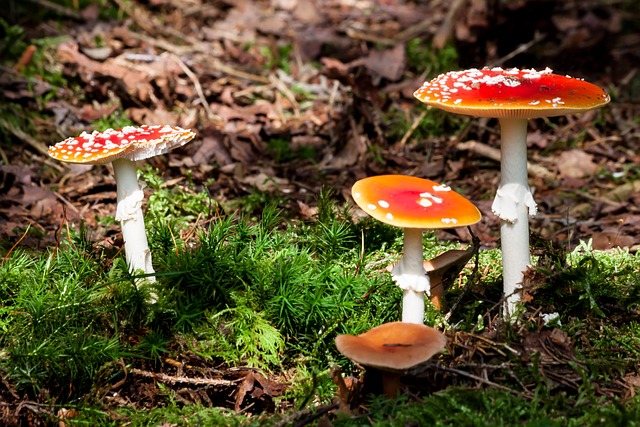
The integration of Amanita Muscaria microdosing into daily life can be a transformative experience for individuals seeking enhanced creativity and focus. This psychedelic mushroom, often referred to as ‘Fly Agaric’ due to its distinctive red and white cap, has a long history of use in various cultures, particularly in Siberian shamanistic practices. Today, contemporary research suggests that microdosing with Amanita Muscaria can potentially unlock cognitive potential by stimulating neural connectivity and promoting a state of enhanced mental clarity. Proponents claim that this subtle dosing allows for a sustainable routine that can lead to breakthroughs in problem-solving and innovative thinking.
To effectively incorporate Amanita Muscaria microdosing into one’s daily life, it is crucial to approach the practice with intention and mindfulness. This entails careful consideration of dosage, timing, and setting to ensure a safe and beneficial experience. Users often report a noticeable improvement in their ability to focus on tasks, coupled with a surge in creative ideas and solutions. The edible form of Amanita Muscaria can be prepared in various ways, such as teas or capsules, making it accessible for individuals to experiment with its effects while maintaining their daily responsibilities. It is advisable to consult with healthcare professionals before integrating this practice into one’s routine, as individual responses to psychoactive substances can vary significantly.
